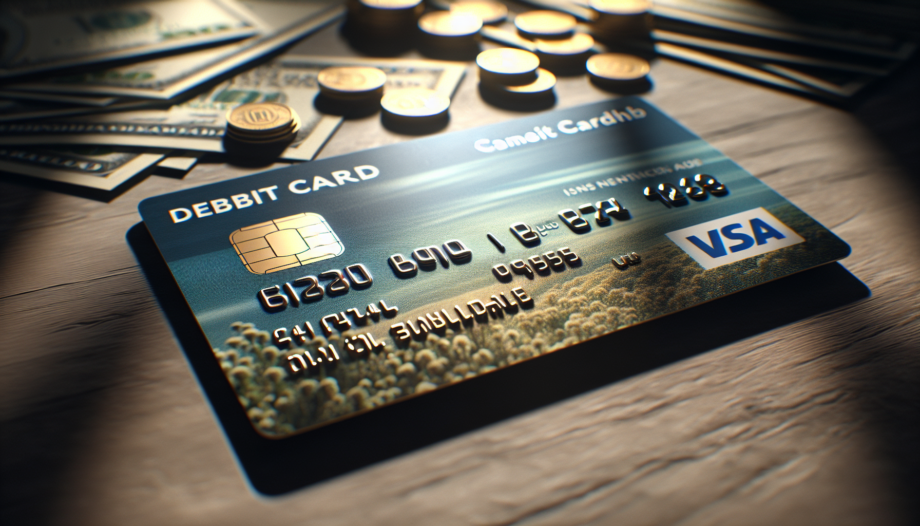Debit cards have become an essential tool for managing personal finances, offering a convenient way to access funds and make purchases without carrying cash. However, as the use of debit cards continues to rise, so does the risk of fraud and unauthorized transactions. To combat these threats, debit cards come equipped with various security features, including the crucial debit card security code. Understanding what this code is, where to find it, and how it protects your finances is key to ensuring the safety of your debit card transactions.
What Is a Debit Card Security Code?
Definition and Purpose of Debit Card Security Codes
A debit card security code, also known as a CVV (Card Verification Value), CVC (Card Verification Code), or CSC (Card Security Code), is a three or four-digit number located on your debit card. This code serves as an additional layer of security for online transactions and card-not-present transactions, such as purchases made over the phone.
The primary purpose of the debit card security code is to verify that the person making the transaction has physical possession of the card. By requiring this code, merchants can confirm that the purchase is being made by the rightful cardholder, thus reducing the risk of fraudulent activity.
Types of Debit Card Security Codes (CVV, CVC, CSC)
Debit card security codes come in various forms, depending on the card issuer. The most common types include:
- CVV (Card Verification Value): A three-digit code located on the back of most debit cards.
- CVC (Card Verification Code): Similar to CVV, this is a three-digit code found on the back of debit cards.
- CSC (Card Security Code): Some card issuers use this term interchangeably with CVV or CVC.
Regardless of the specific acronym used, all these codes serve the same purpose: to provide an extra level of security for online and card-not-present transactions.
Where to Find the Security Code on a Debit Card
Location of Security Code on Different Debit Cards
The location of the security code on a debit card may vary depending on the card issuer. However, in most cases, you can find the debit card security code on the back of the card. It is typically a three-digit number printed on the signature panel, just to the right of the card number.
Some less common debit cards may have the security code on the front of the card, usually near the card number or expiration date. If you’re unsure about the location of your debit card’s security code, consult your card issuer’s website or contact their customer support for guidance.
Distinguishing Security Code from Other Card Information
It’s essential to distinguish the debit card security code from other important card information, such as the card number, expiration date, and PIN. While the security code is used for online and card-not-present transactions, the PIN (Personal Identification Number) is a separate code used for ATM withdrawals and in-person purchases.
To avoid confusion, always ensure that you are providing the correct information when making a transaction. Never share your security code or PIN with anyone, as this could compromise the safety of your debit card and linked bank account.
How Debit Card Security Codes Protect Your Finances
Role of Security Codes in Preventing Fraudulent Transactions
Debit card security codes play a crucial role in preventing fraudulent transactions, especially in the context of online shopping and other card-not-present scenarios. By requiring the security code, merchants can verify that the person making the purchase has physical possession of the card, making it more difficult for fraudsters to use stolen card information.
In addition to the security code, debit cards also employ other security features, such as EMV chips and advanced fraud detection algorithms. These measures work together to create a multi-layered defense against unauthorized transactions, protecting your financial information and assets.
Importance of Safeguarding Your Debit Card Security Code
Given the critical role that security codes play in protecting your debit card information, it is essential to keep your code private and secure. Never share your security code with anyone, including friends, family members, or merchants. Fraudsters may attempt to trick you into revealing your code through phishing emails, text messages, or phone calls, so remain vigilant and never provide your code in response to unsolicited requests.
Regularly monitoring your bank account activity and promptly reporting any suspicious transactions can help minimize the impact of potential fraud. By staying proactive and safeguarding your debit card security code, you can significantly reduce the risk of falling victim to financial crimes.
What to Do If Your Debit Card Is Lost or Stolen
Steps to Take Immediately After Losing Your Debit Card
If your debit card is lost or stolen, it’s crucial to take swift action to minimize the potential for fraudulent activity. The first step is to contact your bank or card issuer to report the loss or theft. Most financial institutions have dedicated hotlines or online reporting systems to handle such emergencies.
When you report your card as lost or stolen, your bank will immediately deactivate the card, preventing any further unauthorized transactions. They will also work with you to issue a replacement card, which typically arrives within a few business days.
Monitoring Your Bank Account for Suspicious Activity
After reporting your lost or stolen debit card, it’s essential to closely monitor your bank account activity for any signs of fraudulent transactions. Review your recent account statements and report any unfamiliar charges to your bank immediately.
Most banks offer online and mobile banking services that allow you to easily track your account activity in real-time. Setting up alerts for unusual transactions can help you quickly identify and respond to potential fraud, minimizing the risk of financial loss.
| Step | Action |
|---|---|
| 1 | Report lost or stolen card to bank or card issuer |
| 2 | Monitor bank account activity for fraudulent transactions |
| 3 | Report any suspicious charges to your bank immediately |
| 4 | Request a replacement debit card from your bank |
By following these steps and remaining vigilant, you can significantly reduce the impact of a lost or stolen debit card and protect your finances from fraudulent activity.
Tips for Safe Online Shopping with Your Debit Card
Using Secure Payment Methods and Reputable Websites
When shopping online with your debit card, it’s crucial to prioritize security to protect your financial information. One of the most effective ways to ensure safe online transactions is to use secure payment methods and shop only on reputable websites.
Look for websites that use secure socket layer (SSL) encryption, which is indicated by a padlock icon in the address bar and a URL that begins with “https” instead of “http.” These sites encrypt your sensitive data, making it much more difficult for hackers to intercept and steal your information.
Protecting Your Debit Card Information Online
In addition to using secure websites, there are several other steps you can take to protect your debit card information while shopping online:
- Never share your debit card security code with anyone, including online merchants.
- Avoid saving your debit card information on websites, especially if you’re using a shared or public computer.
- Regularly update your online banking passwords and security questions to prevent unauthorized access to your accounts.
- Monitor your bank statements frequently and report any suspicious activity to your bank immediately.
By following these best practices and remaining cautious when shopping online, you can enjoy the convenience of using your debit card while minimizing the risk of fraud and financial loss.
Understanding where to find your debit card security code and how it protects your finances is an essential aspect of responsible card ownership. By safeguarding your code, monitoring your account activity, and practicing safe online shopping habits, you can significantly reduce the risk of falling victim to debit card fraud. Remember, your debit card is directly linked to your bank account, so treating it with the same level of care and security as you would cash is crucial to maintaining your financial well-being.
See also:

